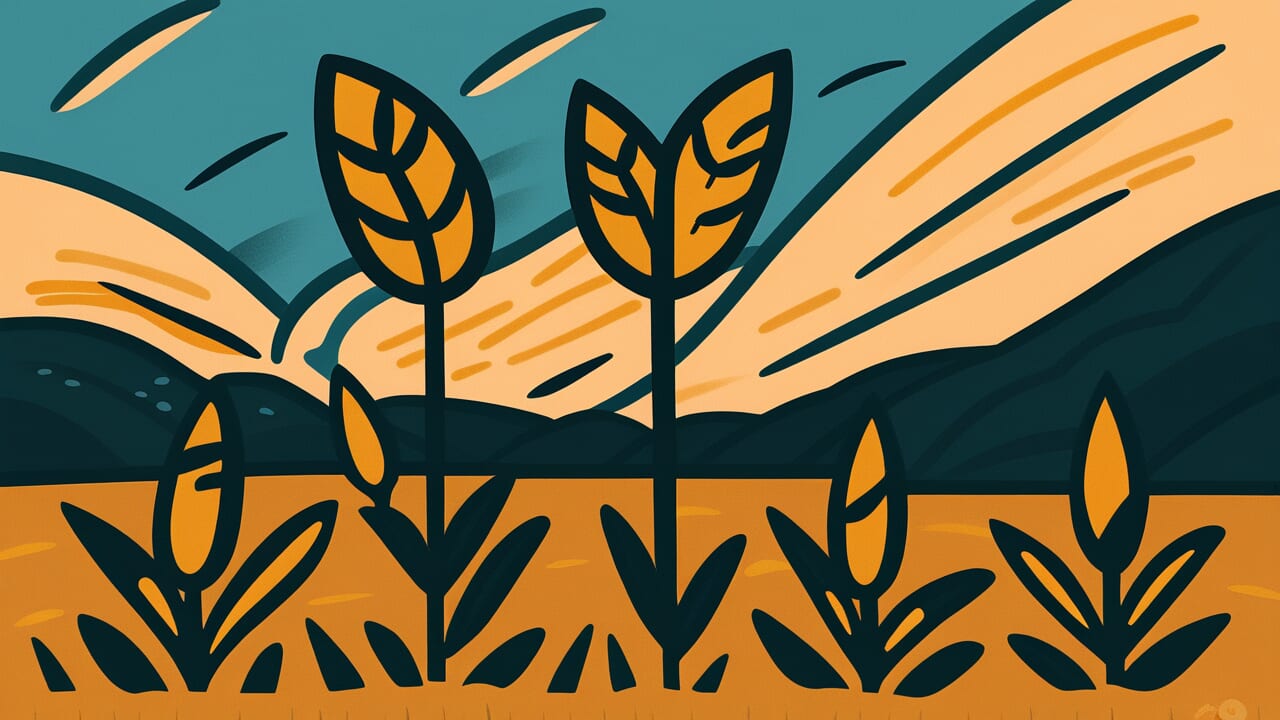How to Read “A reed swaying in the wind”
Kaze ni soyogu ashi
Meaning of “A reed swaying in the wind”
This proverb teaches that you can avoid danger and hardship by responding flexibly, like a reed swaying in the wind.
Reeds don’t resist strong winds head-on. Instead, they bend gracefully and let the wind’s force pass through them. This is why they don’t break.
In life, this means you shouldn’t stubbornly cling to your position or opinions. It’s important to respond flexibly depending on the situation.
Rather than confronting strong power or authority directly, sometimes you need to lower yourself. By dodging the opponent’s momentum, you can protect yourself.
People use this proverb when advising someone facing difficult situations. They suggest responding flexibly instead of resisting forcefully.
In modern society, this wisdom applies to many situations. Workplace relationships and unexpected troubles are good examples.
This proverb contains deep life wisdom. Flexibility isn’t weakness. It’s actually the strength you need to survive.
Origin and Etymology
The exact origin of this proverb has several theories. However, it clearly comes from observing the characteristics of reed plants.
Reeds are tall plants that grow near water. They have thin, soft stems. Even when strong winds blow, reeds don’t break. They sway gracefully and return to their original shape when the wind passes.
This expression connects deeply with an Eastern philosophy. The idea is that “softness overcomes hardness.” Hard and strong things aren’t always superior.
Flexible things can overcome difficulties better. Laozi’s philosophy also teaches that “the soft and weak overcome the hard and strong.”
This philosophical background came to Japan. It became established as an expression using the familiar reed plant. This is the most widely accepted theory.
Japan’s natural environment also plays a role. Japan experiences many typhoons and strong winds.
People deeply remembered how plants that bend with the wind survive. Hard trees break in storms, while soft reeds survive.
This sight became a symbol of life wisdom. It has been passed down through generations as a strategy for living.
Interesting Facts
Reeds have been closely connected to Japanese life since ancient times. People used them as roofing material.
They were also valuable for making blinds, brush handles, and even musical instruments. Their hollow, lightweight structure is exactly what gives them flexibility.
Interestingly, reeds are strong not just against wind but also floods. They survive underwater when water levels rise. When water recedes, they grow vigorously again.
This amazing adaptability may have taught people the wisdom to survive.
Usage Examples
- It’s best to deal with that boss like a reed swaying in the wind. You’ll only lose if you confront him directly with your opinions.
- She looks stubborn, but she’s actually like a reed swaying in the wind. That’s why she’s survived in this industry for so many years.
Universal Wisdom
This proverb has been passed down because of a universal reality. Human society always has imbalances of power.
Not everyone can always be the stronger party. Sometimes you face forces greater than yourself. You encounter unreasonable situations and unchangeable environments. In such times, how should people live?
Throughout history, humanity has wavered between two choices. One is to confront challenges head-on. The other is to respond flexibly.
Courageous resistance looks beautiful. But sometimes it leads to self-destruction. Flexible response might look cowardly. But by surviving, you can wait for the next opportunity.
This proverb shows wisdom for survival. It’s wiser to survive by lowering yourself temporarily than to break from pride or saving face.
This teaching faces harsh reality squarely. However, this isn’t simple compromise or giving up. When the wind passes, the reed stands up again.
Flexibility is a strategy to survive shrewdly and stand up again someday. Human history has been woven by people with such flexible wisdom.
When AI Hears This
When a reed sways in the wind, a remarkable engineering phenomenon occurs. When force is applied to a material, how it processes that force determines its fate.
Rigid materials concentrate force at a single point. When force is repeatedly applied, they suffer “fatigue failure.” This is why metal bridges suddenly collapse from small vibrations.
Flexible materials like reeds bend to distribute force across time. They release energy as motion.
The key concept here is “stress concentration factor.” When you apply lateral force to a rigid rod, force concentrates at the base 10 to 100 times.
This means wind at 10 meters per second creates destructive force equivalent to 100 meters per second at the base. Reeds, by bending, reduce this factor to about 2 or 3.
Furthermore, their swaying motion dissipates over 70 percent of input energy as kinetic energy.
Tokyo Skytree’s central pillar vibration control system applies exactly this reed principle. An independent pillar stands at the center, swaying separately from the outer structure to cancel earthquake energy.
Ancient five-story pagodas use the same mechanism. Modern skyscrapers now adopt seismic dampers. The design philosophy has shifted from resisting with hardness to absorbing energy by deliberately swaying.
Reeds have been practicing cutting-edge structural engineering for thousands of years.
Lessons for Today
Modern society changes rapidly. Unpredictable events happen one after another. In such times, this proverb’s teaching shines even brighter.
The difficulties you face don’t always need to be pushed back with force.
When you receive unreasonable demands at work, don’t rebel immediately. Accept them once and respond flexibly.
When opinions clash in relationships, don’t keep insisting you’re right. Try to understand the other person’s position.
When unexpected troubles strike, don’t panic. Adjust your plans according to the situation. Such flexibility becomes the power to survive modern times.
However, being flexible doesn’t mean having no beliefs. Reeds stand up again when the wind passes.
You too can stand up again if you keep what’s important in your heart, even when you lower yourself temporarily. Your flexibility is proof of your strength.



Comments